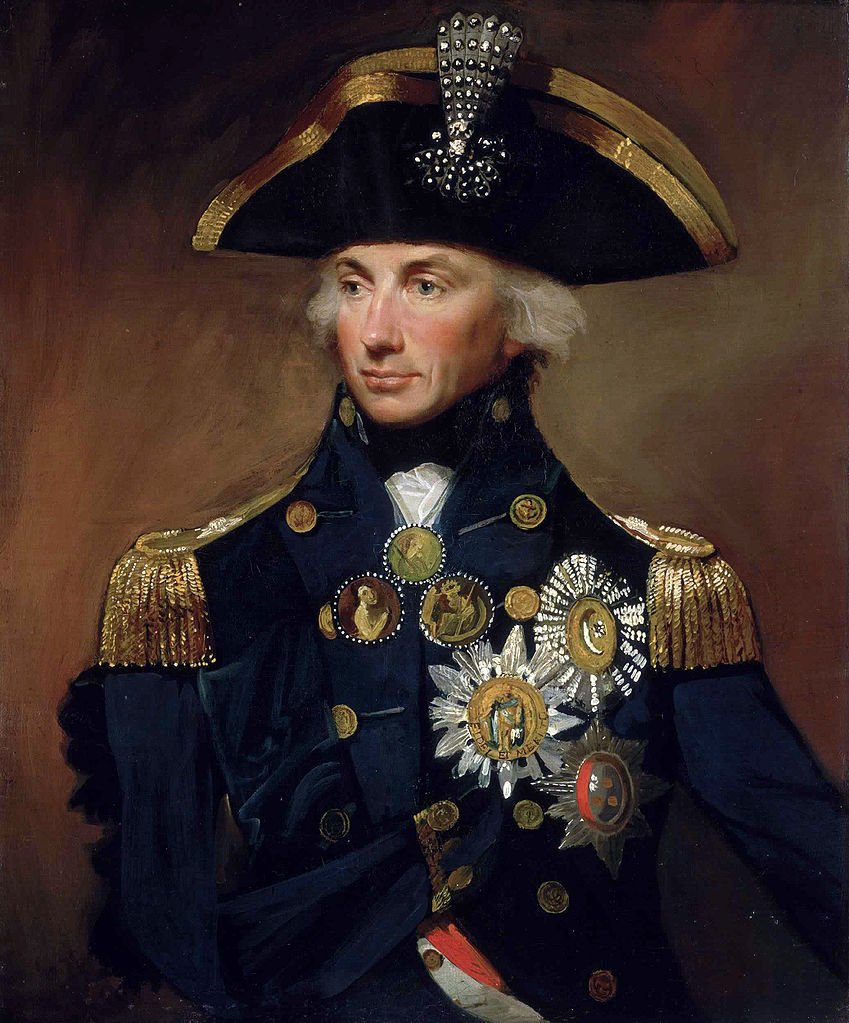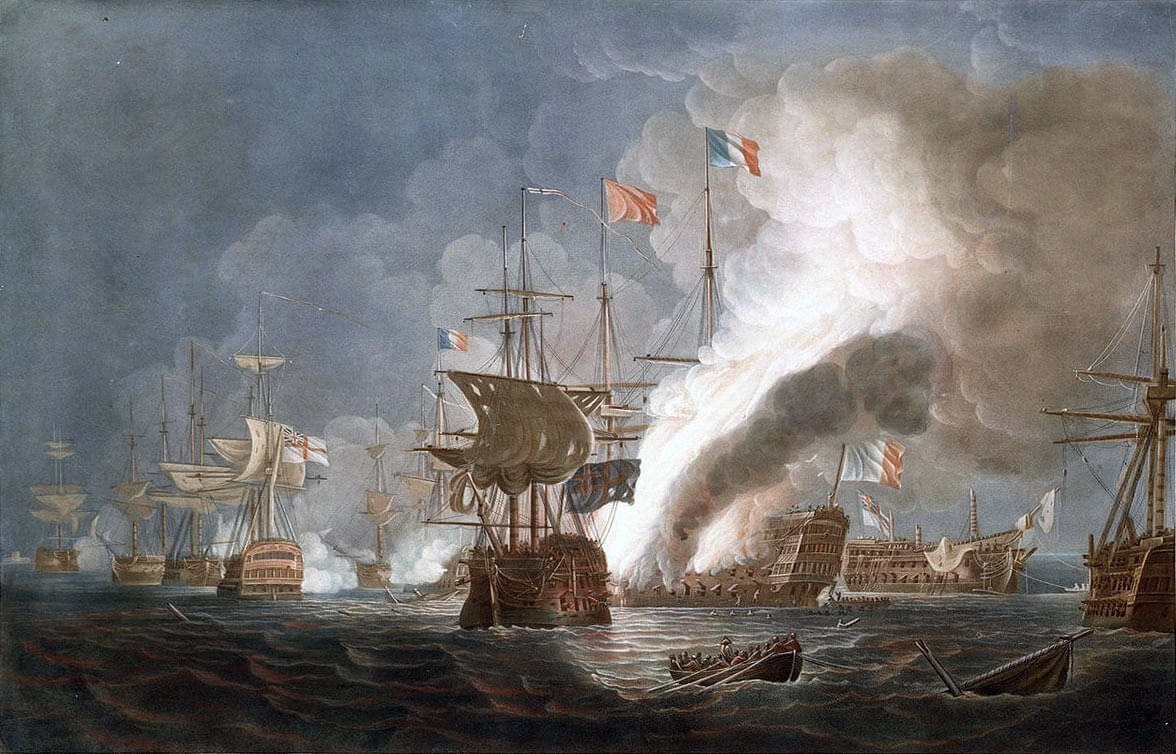The storied history of how Mississauga's Burnhamthorpe Road was named
/Admiral Horatio Nelson
Over the holiday break I enjoyed exploring several programs and articles on the life and career of British naval hero Vice-Admiral Horatio Nelson (1758-1805).
Nelson was born in Burnham Thorpe, England in 1758 – and yes, that is where Burnhamthorpe Road partially takes its name inspiration from, but we will get back to that. We also had a brief article earlier in this series about the name origins of Burnhamthorpe, and we will touch on that again here, but we will also expand on the times of Admiral Nelson – whose name is still known and commemorated more than 200 years after his death.
Nelson’s naval career began in 1771 as an ordinary seaman under his uncle, Captain Maurice Suckling. Nelson quickly ascended to the rank of midshipman, putting him on course to becoming an officer. In the following years Nelson gained a great deal of experience as ships on which he was stationed crossed the Atlantic Ocean on several occasions, with excursions into the Caribbean and to the East Indies. Nelson had his first experience with war in 1775 during the First Anglo-Maratha War. He attainted the rank of Captain in 1779 aboard the HMS Hinchinbrook, and by 1780 he was stationed in Port Royal in the Caribbean. Nelson was given command of the 44-gun frigate HMS Janus and he was active during the American War of Independence in capturing several American ships.
HMS Victory, Nelson's flagship at Trafalgar, in Portsmouth c1889
In 1781 Nelson, after returning to England, was appointed captain of the 28-gun frigate HMS Albemarle. Nelson’s travels aboard the Albemarle took him to Jamaica and the West Indies, and in 1782 to Newfoundland and Quebec in pursuit of American Privateers. Nelson arrived at Quebec on September 18, 1782 – the only time Nelson would come to what is now Canada. Between 1787 and 1793, during a time of peace, Nelson was in reserve on half-pay albeit agitating for a new command. In 1793, amidst rising tensions between England and France, Nelson was given command of the 64-gun ship-of-the-line HMS Agamemnon. Nelson and Agamemnon were sent to the Mediterranean as part of the naval division under command of Vice Admiral William Hotham. After Nelson distinguished himself at Calvi (1794) and the Battle of Genoa (1795), Nelson was given independent command in January of 1796 and the Agamemnon, after several skirmishes, returned to England for repairs. Nelson was then given command of the 74-gun ship-of-the-line HMS Captain and oversaw the blockade and occupation of the Genoese port of Elba. As conflict with Napoleon escalated, Nelson became increasingly involved in notable battles, including at Cadiz, Battle of the Nile, Siege of Acre, Blockade of St-Domingue and the Siege of Malta. In 1797 he was given command of the 74-gun flagship HMS Theseus, and in 1799 was promoted to Rear-Admiral of the Red.
In the course of his career, Nelson lost sight in the right eye at the siege of Calvi (1794) and lost his right arm at the Battle of Santa Cruz de Tenerife (1797).
Nelson achieved great fame as a result of the Battle of Copenhagen (1801). For the significant role he played in the British victory, Nelson was granted the titles of Viscount Nelson of the Nile and of Burnham Thorpe. In 1803 Nelson was appointed commander of the Mediterranean fleet and was given the first-rate 104-gun HMS Victory for his flagship. Nelson arrived off a Cadiz in September of 1805. The British fleet met the combined French and Spanish fleet at the Battle of Trafalgar on October 21, 1805. A stunning British victory was marred by Admiral Nelson’s own death in the battle, having succumbed to his wounds after being shot. Reportedly his death came shortly after he learned of his victory, with Nelson attributed as saying “Thank God, I have done my duty”.
Battle of the Nile by Thomas Wihtcomb
News of the Battle of Trafalgar, and of Nelson’s death, was brought to England by the HMS Pickle, which arrived on November 4, 1805. HMS Victory, conveying Lord Nelson’s body, arrived in England on December 11, 1805. After a state funeral he was buried with full honours at St. Paul’s Cathedral on January 9, 1806.
As you can probably tell, this article offers only a broad sweep of Nelson’s career journey and rise to fame in the public consciousness of the times. There are many, many resources to consult on the life and times of Lord Horatio Nelson, including:
But to return to the theme of our series, why the place name here? In general terms, places are named for people, events and other locations that individuals do not wish to forget. Early place names to the west of Mississauga carry direct associations to Lord Nelson: Trafalgar Township and the adjacent Nelson Township, both named in 1806, take their names from the famous battle and from Nelson himself. The village of Bronte, at the mouth of the Twelve Mile Creek and now part of Oakville, was formed in 1834, and takes is name from one of Lord Nelson’s titles as the Duke of Bronte. So, with the knowledge that, through the names of Nelson, Trafalgar and Bronte on our immediate landscape, the legacy of Lord Nelson was obviously highly thought of by residents many years ago. Indeed, Nelson was a hero, who attained even greater fame and a somewhat legendary status after his final victory and death:
Artist rendition of the Battle of Trafalgar
“Nelson was barely less famous in his lifetime. Britain was an island nation with an overseas empire; the strength of its navy was central to national pride and economic security. Nelson was not merely a vice-admiral; was not merely the man beating the fearsome Napoleon’s fleet with aplomb and derring-do. Nelson was an officer who led from the front instead of the rear, who promoted men on the basis of merit instead of political connection … His ongoing and blatant extramarital affair with a diplomat’s wife was tabloid gold that added an air of scandalous romance to his exploits.”
Lost Village of Burnhamthorpe, looking south on Dixie Road from Burnhamthorpe Road, c1900
The name of Burnhamthorpe on our landscape began with a hamlet, and not the road. The crossroad community of Sandy Hill (also called Sand Hill and Sandhill) was established circa 1859 around what is today the intersection of Dixie Road and Burnhamthorpe Road. It is said that confusion arose as to the place name and similar names elsewhere, and that resident John (or James) Abelson suggested the name of Burnhamthorpe after not only his own birthplace, but also in honour of the birthplace of Lord Nelson. The name for the crossroads hamlet became official in 1862 (57 years after Lord Nelson’s death at Trafalgar) with the opening of the local post office under postmaster William Savage. In time, the concession road that passed through the hamlet of Burnhamthorpe became known locally as the Burnhamthorpe Sideroad. In the 1950s it became known officially as Burnhamthorpe Road. The hamlet grew to include a school, church, general store, a Sons of Temperance Hall, a steam-powered mill, blacksmith, carriage shop, cheese factory and a shoemaker’s shop.
Some other local naval connections that have some intersection with Nelson include Oliver Grace Sr., who, upon retirement from the Royal Navy, obtained a land grant in historic Mississauga in 1809. Grace served aboard the 50-gun HMS Leander at the Battle of the Nile (1798) as part of the British fleet under the command of Rear-Admiral Nelson.
Another local connection comes in Sir William George Parker, 2nd Baronet of Harburn (1787-1848), who obtained a land grant in the Cooksville area. His son, Sir Melville Parker, was an early community leader here in historic Mississauga. Modern Harborn Trail in Mississauga takes its name origin from the Parker family and their ancestral home. The 1st Baronet of Harburn and William George Parker’s father was Sir William Parker, who at one point was Horatio Nelson’s commanding officer.
Nelson's Column, Montreal
Commemorations to this British naval hero can be found throughout the world, not only in names references to places, roads, food, drink and businesses, but also in the form of commemorative monuments. The second oldest surviving monument honouring Lord Nelson in the world can be found in Montreal with Nelson’s Column, erected in Place Jacques-Cartier in 1809. It is Montreal’s oldest monument and the oldest war memorial in Canada. Nelson’s victory at Trafalgar, and his death, catapulted him to the status of a hero, and residents far and wide sought to honour and remember not only him, but their own places of origins within their new land.
















